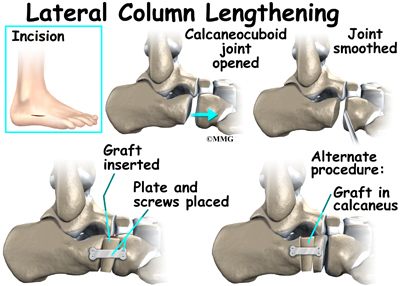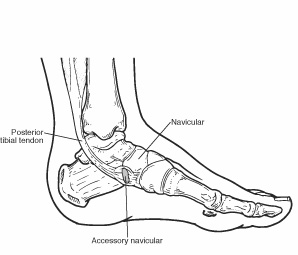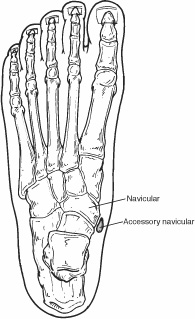Surgery #2 - Hardware Removal (June 2015)
Surgery #3 - Modified Brostrom Ankle Surgery (May 2016)
If you're like me, you hear "All-American" and you instantly start singing Book of Mormon. But, in the surgical world, it means something different. In the simplest explanation, it is a correction for adult acquired flatfoot.
The term "All-American" actually comes from the fact that the surgery involves multiple procedures rolled into one. According to Mercy Hospital, each procedure was used independently to correct adolescent flatfoot, but combining them for adult correction was considered innovative when proposed by Dr. Gregory Pomeroy and Dr. Arthur Manoli. Because of its founders, the surgery is also sometimes known as the Pomeroy-Manoli Procedure.
Obviously, every surgery is going to be a little bit different for every patient. The right doctor is obviously going to tailor the procedure to your needs. Now, I should preface this by explaining that I am NOT a medical professional, and my training as a museum curator should not give you confidence in my abilities to diagnose. This is simply my attempt to explain the procedure I was given in terms that make sense to me, and hopefully to you as well. Much of this information is based on either discussion with my surgeon, or research I did. I found the website Foot Education to be especially helpful.
So your navicular bone in your foot is a normal bone that most everybody has. An accessory navicular, then, is an extra bone. It is congenital, which means I've had it since I was born, and it occurs in about 2.5% of the population, and for most people doesn't cause any problems. This is generally pointed to as the underlying cause for this whole mess, although many people who get to adulthood without an issue never have any problems.
Posterior Tibial Tendon Repair
You can see the location of the tendon in the graphic above. While they were conducting the surgery, they realized that my tendon was not just damaged but actually torn, so there was a bit more repair that had to happen there than expected. I have a nice big incision about midway up on the inside of my calf because after they repaired it, they also had to realign it.
Medial Displacement Calcaneal Osteotomy
The best way I can explain this is that it is tilting the ankle back in the right direction. An incision is made into the heel, then the bone is cut into two pieces. Then, the back part of the bone is shifted so the ankle will rest straight, and it is held in place using screws.
Lateral Column Lengthening
 |
| Houston Methodist Orthopedics & Sports Medicine |
If the above is tilting the ankle in the right direction, this is all about tilting the foot. For me, this involved a couple of screws and a cadaver bone wedge graft. They insert the wedge, usually between 6-12 mm either into the joint of the calcaneus and cuboid bones or by making a cut into the former
As you can see, it was a pretty intensive surgery. The PA told me during my first (and second) checkups that I need to be patient, as they essentially took my foot apart and put it back together again. It has been a long road, but you can read my updates here:
Surgeries #1 & 2 -
Surgery #3


Please feel free to leave your comments, your questions, or your own stories below, but please know that I do not allow for advertising in my comment sections. Thank you!
ReplyDeleteJenna thank you so much for writing this blog! It has been a great source of inspiration and point of reference. I had the All American in Jan. of 2015 and found out months later that the bone didn't take. I had to have certain parts of the surgery redone this past Nov. It's been a long recovery as has yours. I'm 26 years old and am just like you and have a ton of energy and can't wait to get back into the normal routine of life. I'm a teacher so I can't wait to get back into the classroom too. I was wondering if your other foot was flat and if so are you going to go through with surgery on it in the future? Please keep us updated with how you're doing at this point in your life and the recovery process as it helps myself and others :)
ReplyDeleteHi Jenna!
ReplyDeleteI know your blog is several years old, but I am extremely grateful to have found it! I am facing the "All American 5 in 1 procedure" in May. I am a teacher and my surgeon said to wait until summer. I am from Upstate NY originally (Utica to be exact) I now live in St. Augustine FL. I go to Disney a lot and in fact tonight am going to Universal Studios for Halloween Horror Nights. We are getting a wheel chair because my ankle is so bad right now I would never make it around the park.
Again, thank for your blog! It has given me a ton of insight and so much to think about.
I hope you are kicking butt with running and enjoying trips to Disney!
Hi! I also may be undergoing the all american procedure for flat feet and a symptomatic accessory navicular bone and I am just wondering how your feet feel today and if you are happy that you had the surgery?
ReplyDeleteThank you (:
Hi! Yes, I am very happy that I had the surgery. I do still have some ankle pain if I'm not careful with it, and I can definitely tell when it is going to rain, but if I had to do it all over again I would. Good luck, and listen to your PT!
Delete